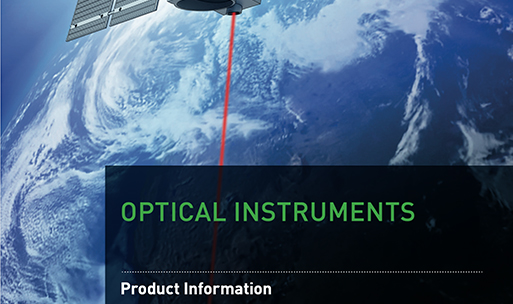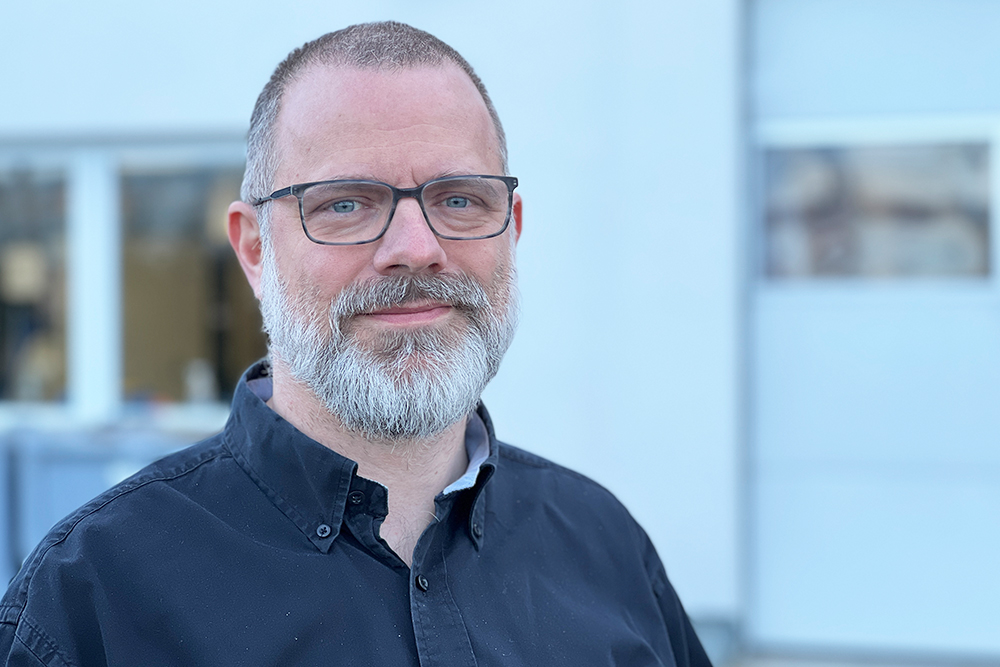Laser Optical Instruments for Earth Observation
SpaceTech develops laser optical instruments for Earth observation missions, such as laser ranging interferometers, high stability lasers, frequency reference units - specifically instruments requirering highly stable laser sources e.g., for heterodyne interferometers and trace-gas measurements. For this, SpaceTech has built up a team of laser specialists covering the required areas of competency optical, optomechanical to optoelectronical design.
SpaceTech covers the full development cycle of optical instruments:
- Instrument concept design
- Detailed optical, mechanical and electrical design
- Manufacturing and test of carbon fibre-glas and metal-glas optomechanical components, including qualification of flight hardware
SpaceTech optical instruments - selected projects & milestones
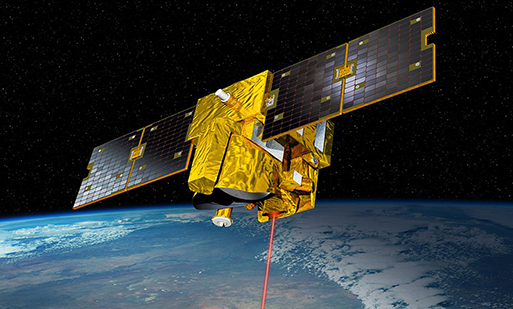
The satellite MERLIN (Methane Remote Sensing LIDAR Mission) is a German-French cooperation. In this cooperation CNES signs responsible for the Satellite Bus, which is a Myriade Evolution, and DLR signs responsible for the Instrument.
The goal of the MERLIN mission is to observe the concentration of the greenhouse gas methane.
The MERLIN Frequency Reference Unit FRU
To enable the required emission wavelength at 1645 nm a frequency reference unit (FRU) is part of the instrument on the satellite. The FRU contains a methane cell, several diode lasers (1064 nm and 1645 nm emission wavelength), a wavemeter and the associated control electronics for stabilizing the diode laser emissions and the high power laser pulse frequency to the methane cell and the wavemeter.
- An absolute laser frequency accuracy of 10 MHz
- 5 mW of optical output power at 1645 nm
SpaceTech's role in the MERLIN FRU project
Since January 2015 SpaceTech is responsible for the development of FRU in subcontract to the instrument prime Airbus DS (Ottobrunn).
In Phase B extension the work focussed on the development of the preliminary design of the FRU subsystem as well as on breadboarding of dedicated subassemblies to verify the achievable performance of the selected design. Phase B ended with the successful PDR.
In the current Phase C/D, the FRU development continues with the EM, the QM and the actual flight model.
Links
DLR - MERLIN
CNES - MERLIN
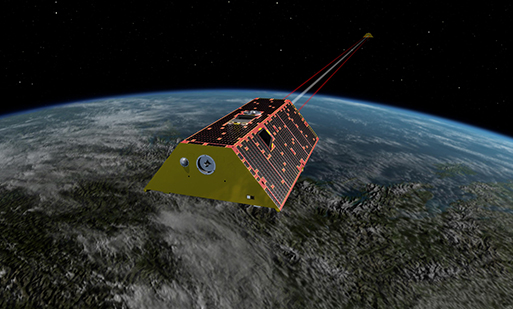
To ensure the continuation of the gravity field measurements, the Grace Follow-On (GRACE-FO) mission is under development in a US–German cooperation.
The goal of the Laser Ranging Interferometer (LRI) was to improve the distance measurement accuracy significantly from some micrometers to some ten nanometers at 0.1 Hz frequency.
Cost efficient SpaceTech development of the GRACE-FO LRI
To allow a cost-efficient development and a launch in 2017, the GRACE Follow-On satellites were very similar to the original GRACE satellites with some improvements and a technology demonstrator for further gravity missions. Therefore, in addition to the K-Band an experimental laser ranging instrument (LRI) flew, based on a laser interferometer.
- Ranging measurement accuracy of 80 nm/√Hz (for 10-100 mHz)
- Laser beam co-alignment of less than 50 µrad
Main tasks for SpaceTech in the GRACE-FO Laser Ranging Interferometer project
Industrial responsibility for German Laser Ranging Interferometer project contribution
Development of the triple mirror assembly, a light-weight retroreflector providing the beam routing with 600 mm beam offset and 50 µrad coalignment accuracy
Development of the optical bench including beam steering mechanism, signal detection and electronics
In house assembly, integration and test of the EMs and PFMs on unit- and instrument-level and support at spacecraft-level
Links
Datasheet SpaceTech LRI
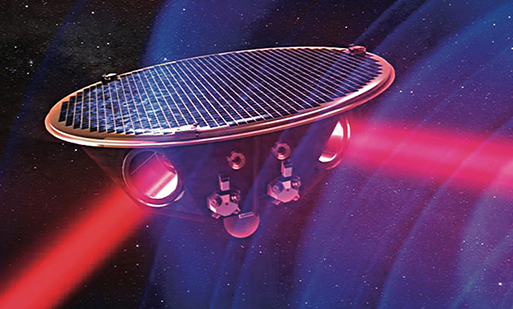
Gravitational waves are detected by displacement measurements using laser interferometers. In LISA three satellites are arranged in a triangular shape with an arm length of 5 million kilometers. Two active laser systems will be onboard of each satellite sending their light to the two remote S/C and forming an interferometer between two S/C, respectively. The laser light is the only link between the satellites. It will be used to detect tiny displacements at picometer level caused by gravitational waves, but also for data transfer, and for inter-S/C ranging. To achieve this, LISA requires (among other laser requirements) ultra-stable laser sources in power and frequency.
SpaceTech LISA laser concept
At SpaceTech, we develop the laser as prime contractor to ESA. STI is leading a consortium of Ferdinand-Braun-Institute (seed laser), Fraunhofer ILT (fiber amplifier), and Airbus Defence & Space and DLR Bremen for testing. SpaceTech is responsible for the overall system, electronics, and integration.
The current contract covers the development from laser concept up to the Engineering Model. Phase 1 – breadboarding – has been completed with the laser meeting or even exceeding almost all requirements.
LISA key laser parameters and features
Wavelength 1064 nm with ultra-stable long-term frequency stability; see orange graph in the right figure
Tuning range of ± 2 GHz with a slew rate of 638 MHz/s (the latter number refers to the seed laser)
High phase coherence with phase modulation capabilities
2 W output power delivered out of a polarization-maintaining optical fiber with excellent stability; see blue graph in the right figure
Links
A new laser technology for LISA
LISA laser system and European development strategy
Highly stable fiber lasers for satellite-based gravitational measurements
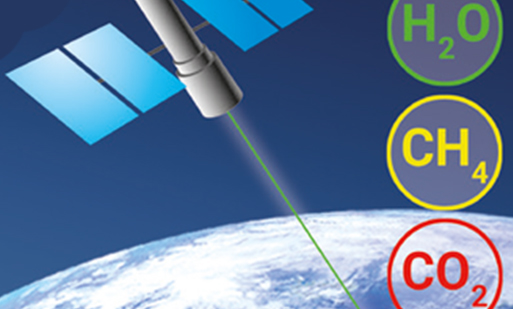
The Lidar Emitter and Multi-species greenhouse gases Observation iNstrument (LEMON) is a novel Differential Absorption Lidar (DIAL) sensor concept for greenhouse gases and water vapor measurements from space.
SpaceTech is responsible for the development of the LEMON FRUIT
After the initial design phase, the concept has been implemented on breadboard level and preliminary tests with the stabilized comb have shown performance compliant with the requirements. The implementation of the airplane instrument is currently ongoing. In parallel, radiation tests on critical subunits, such as the nonlinear fiber have been performed successfully demonstrating the potential of the concept for a spaceborne instrument.
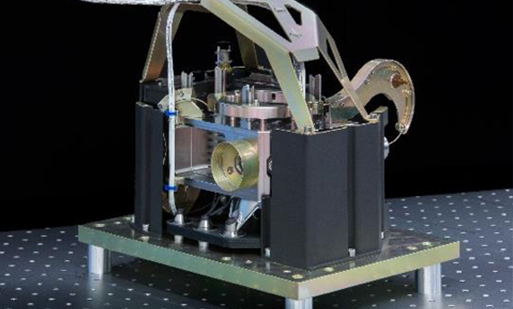
To further improve the measurement accuracy of the time-variable gravity field, ESA is investigating the concept of a ‘Next generation gravity mission’ (NGGM), consisting of two pairs of satellites and a heterodyne laser interferometer for inter-satellite ranging.
Based on the heritage of the development of the laser ranging interferometer for GRACE Follow-On and the former and ongoing studies for NGGM, STI participates in the development of NGGM under several ESA contracts.
SpaceTech work on NGGM
Development of and advanced laser sources providing significantly higher output power compared to GRACE Follow-On, while providing even higher frequency stability. This is performed under direct contract to ESA with Fraunhofer ILT and NPL as subcontractors.
Investigation of several concepts for the laser metrology instrument (LMI) for NGGM, namely the on- and off-axis variants of the transponder and the retroreflector concept. This is performed as sub-contractor to Thales Alenia Space in the frame of the ESA study “Consolidation of the system concept for the next generation gravity mission”, in which STI signs responsible for the LMI.
Breadboarding of an optical bench for the retroreflector concept to investigate the feasibility of the retroreflector concept on real hardware. This is performed under direct contract to ESA with Thales Alenia Space as subcontractor.
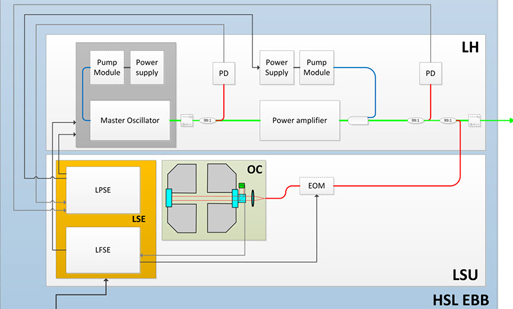
ESAs next generation gravity mission (NGGM) is a successor to GOCE. The launch date towards the end of this decade shall provide significantly improved measurement resolution.
Similar to the GRACE mission (launched 2002) a satellite-satellite-tracking (SST) scheme is planned, with a laser interferometer instead of a Ka-Band link providing much higher measurement accuracy.
SpaceTech High Stability Laser key importance
Of key importance for the laser interferometer is a laser source with sufficient power and extremely high frequency stability down to several Hz.
SpaceTech, being prime contractor with the project partners National Physical laboratory (NPL), Fraunhofer Institute for Laser technology (ILT) and Airbus DS, was responsible for:
- Project coordination and system engineering
- Thermal and structural modeling of the laser head (being developed by ILT) and the laser stabilization unit (being developed by NPL)
- Design of space compatible electronics
- Performance modeling
- AIT planning
In the frame of ESA's “Consolidation of the system concept for the next generation gravity mission”, Thales Alenia Space sub-contracted STI for the Laser Metrology Instrument (LMI). The LMIs concepts investigated find their basis in the Laser Ranging Interferometer development for GRACE FO as well as former ESA studies.
SpaceTech investigated NGGM concepts
The SpaceTech LMI concepts include two possible off-axis “Racetrack” instrument schemes:
Optical transponder scheme with two active S/C instrument parts, based on the racetrack design applied on GRACE Follow-On.
Retroreflector scheme with one active one passive S/C instrument part, from former NGGM studies
Find more details in our optical instruments brochure:
Download the SpaceTech optical instruments brochure


